Traditionally a bisque is made with shellfish and heavy cream, so technically this isn’t a bisque. However it is rich and creamy like a traditional bisque, so I’m making an exception. It contains no dairy – it gets its creaminess from vegetables and beans.
There has been a lot of talk in the news over the last few months about AI (artificial intelligence)-created content and more specifically, ChatGPT. I recently watched a webinar about this topic to learn more about how it applies to the work my company does as we produce a lot of content in various forms. I thought I’d test out ChatGPT with this blog post since it’s pretty low risk.
Think of ChatGPT as a search engine but instead of typing ‘cauliflower soup’ and getting a series of recipes, you type in something like ‘what is fun about cauliflower soup?’ and it generates actual content (see some sample screenshots below the recipe) in a matter of seconds. It’s is really amazing how quickly the content is produced. Remember this content is AI-generated, so it is pulling from information that may or may not be accurate (a reminder that we cannot trust everything on the internet).
There were a few key takeaways from the webinar I watched.
- Consider this content a first draft – verify the content and then make it your own. What I shared below sounds a bit robotic and definitely doesn’t sound like me, but it certainly identified some very solid information. Think of it as a super-charged machine that still needs a driver (that’s you).
- The content that is created is original to you – if someone else asks the same question, they will not get the exact same content. Using this content is not considered ‘plagiarism’ as you asked the questions and you are the editor. I am sure that this ethics topic will be revisited many times.
- ChatGPT-4 was released in November, 2022 and only has access to information that was created prior to 2022. With each release more information will be accessible.
You may be thinking, why am I sharing this? As I told my colleague, Brian T, cauliflower soup isn’t the most interesting topic but combined with AI it might be a bit more exciting. I did verify the nutritional benefits that resulted from the ‘explain why cauliflower soup is good for you’ question and they are accurate.
Back to the actual bisque. This recipe is both healthy and filling as it not only contains vegetables but also cannellini beans which add protein. It is easy to make and can be blended using an immersion blender, regular blender or Vitamix (which is what I used so it looks extra smooth). It’s also versatile – you can add more vegetables or spices. The recipe calls for white pepper (not black pepper) which is used more widely in French cooking (‘bisque’ originated in France).
This recipe came from Forks Over Knives magazine which I picked up at Whole Foods. Forks Over Knives is a low-fat, whole-food, plant-based diet. We are trying to eat more vegetarian or vegan meals and there are a bunch of good recipes in this magazine that are easy to adapt. For example, I used some olive oil while a true Forks Over Knives follower would not as it’s not considered a ‘whole-food.’
I made this soup in February and was pleasantly surprised to see that I still had some thyme growing in a pot on my deck. It had turned a lovely shade of purple (likely due the cold winter temperatures) and made for a pretty garnish for this soup.
This was an experiment for me as I still plan to write my Riegl Palate content the old fashioned way. Thank you for indulging me.
| Hearty Cauliflower Bisque | | Print |
- 1 tablespoon olive oil (see Notes)
- 1 medium sweet onion, chopped (~ 1 cup)
- 3 large carrots, chopped (~ 1 cup)
- 4 large celery stalks, chopped (~ 1 cup)
- 4 medium garlic cloves, minced
- 2 teaspoons herbes de Provence
- 4 cups vegetable broth
- 1 pound cauliflower, cut into florets
- 12 ounces yellow-skinned potatoes, not peeled and coarsely chopped
- 2 15 ounce cans cannellini beans, undrained
- 2 tablespoons freshly squeezed lemon juice (~ ½ lemon)
- Kosher salt
- ¼ teaspoon freshly ground white pepper
- ½ cup chopped walnuts, toasted
- 2 teaspoons chopped thyme
- Lemon wedges
- Heat olive oil in a 5 to 6 quart Dutch oven (something you can cover) over medium heat. Add onion, carrots and celery and stir. Lightly sprinkle with Kosher salt. Cover and cook for about 5 to 7 minutes until tender, stirring occasionally. Add 1 to 2 tablespoons of water at a time as needed to prevent sticking. If vegetables are starting to brown, reduce the heat.
- Uncover the pot. Add garlic and herbes de Provence. Stir for about 1 minute until fragrant.
- Stir in vegetable broth, cauliflower and potatoes. Lightly sprinkle with Kosher salt. Increase heat to high and bring to a boil.
- Reduce heat to low and cover. Simmer for 20 to 25 minutes or until cauliflower and potatoes are very tender.
- Stir in cannellini beans, lemon juice and white pepper. Taste for salt – add more if needed.
- Use an immersion blender to blend soup until smooth in the pot. Alternatively transfer soup to a blender or Vitamix and blend until smooth (you may need to do this in batches) and return soup to pot.
- Ensure that soup is heated through before serving.
- Garnish with walnuts and thyme. Squeeze some lemon juice over the soup.
* Since you’re going to blend or purée the soup, the onion, carrots and celery do not need to be finely chopped.
* Soup freezes well. Cool before transferring to a freezer-safe container.
Source: Variation on a recipe from Forks Over Knives, Winter, 2023
Examples of Chat-GPT responses:
Want to try out Chat-GPT for yourself? Go to https://chat.openai.com/ You will be asked to set up a login which is worth it as it stores your queries.




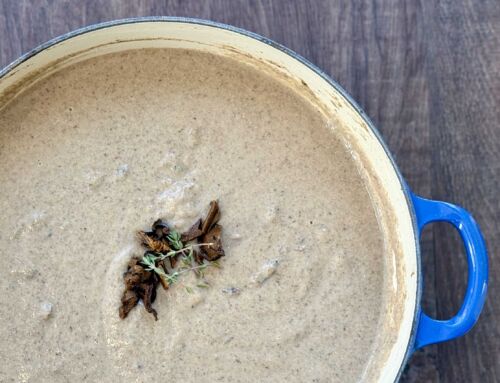
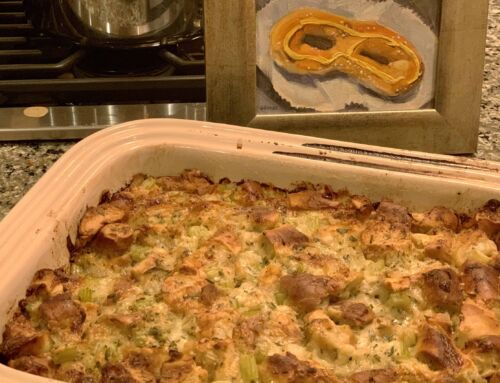
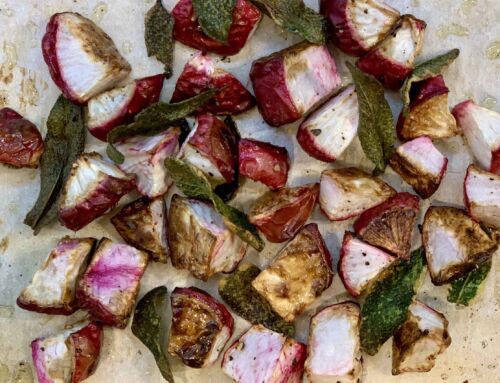
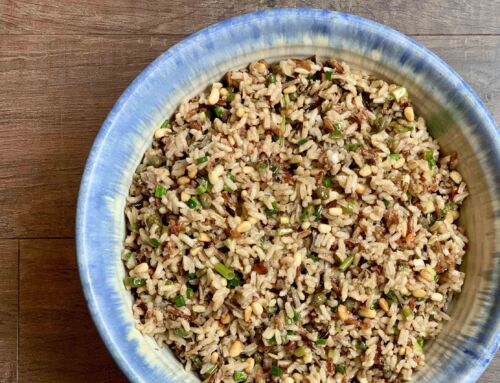
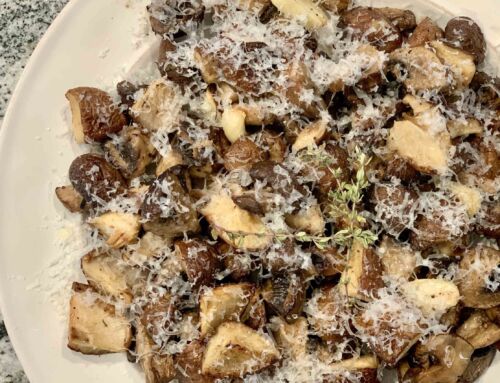
This AI-inspired delight looks delightfully delicious!
Spenser – Thank you! No need for you to make any changes to this recipe.
I always admire your posts and I love the Chat GPT part! As a librarian, I am advising users and watching as vendors integrate this in fascinating and useful ways. The speed of adoption is crazy!
Kathy – Thank you for your kind words! It must be very interesting (and a bit scary) for you in your role to watch the adoption of AI-generated content. A far cry from the encyclopedias from our childhood.
Thanks for the recipe and the ChatGPT lesson, Nicole. I’m borrowing for a family gathering coming up next month. Do you think roasting the veggies first will add a depth of flavor?
Sondra – Great question. I do think roasting the veggies first will give it some extra flavor. Great idea. Please let me know if you do it.
Leave it to you to wade right into the middle of a world-changing debate about AI and intellectual property with such ease! Fearless as ever Nicole!
Dave – Thank you for your great response! It’s been a fun conversation starter for sure. Just doing my part to help educate the world on popular trends.
My Tuesday night chef (your uncle) made this soup this week. Very yummy and just different enough that it is a good option for guests. Ours enjoyed leftovers over the Easter weekend.
Susie – How wonderful! I’m glad that Uncle Christopher is your Tuesday night chef and that this was well received.